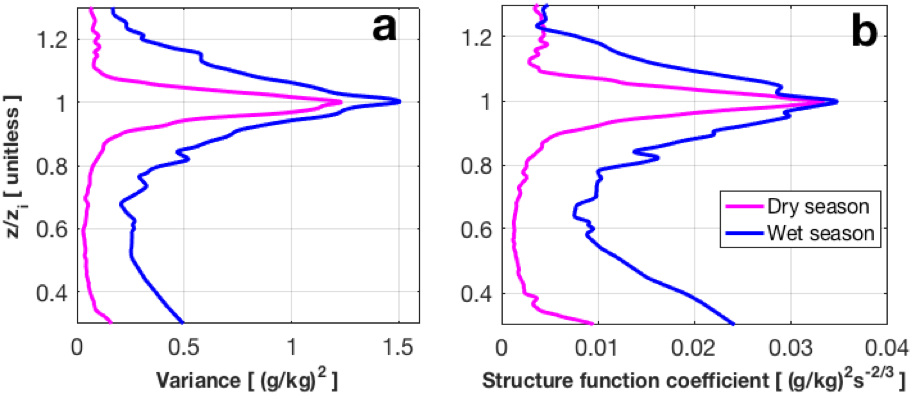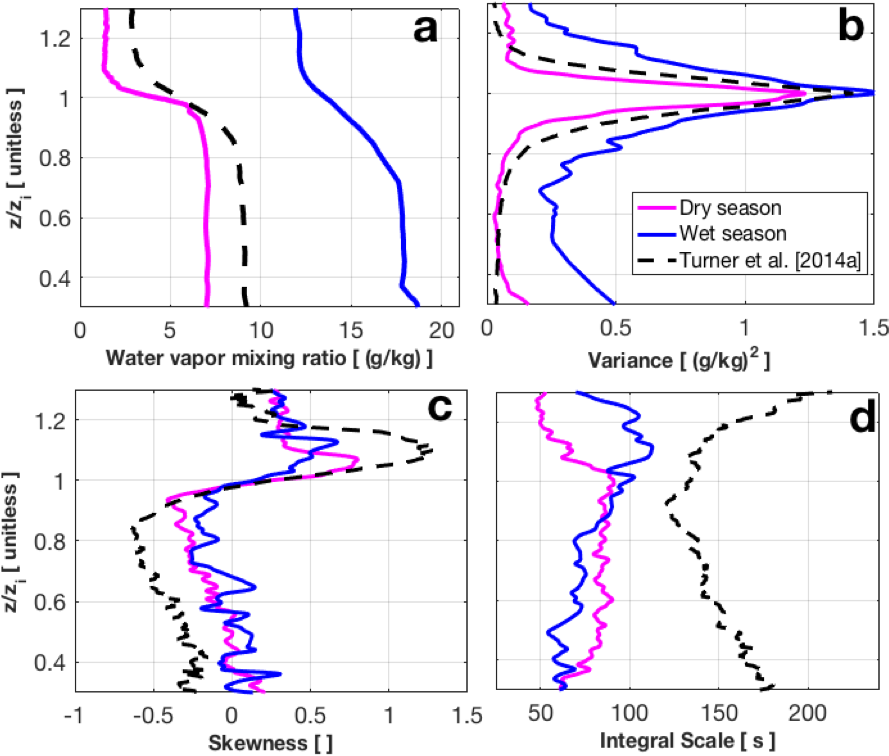Water vapor turbulence profiles of the convective boundary layer over the ARM TWP site
Submitter:
Turner, David D. — NOAA Earth System Research Laboratory
Osman, Mohammed — University of Oklahoma
Area of research:
Atmospheric Thermodynamics and Vertical Structures
Journal Reference:
Science
Turbulence in the convective boundary layer (CBL) is often described by its statistical properties, including the vertical profiles of mean (first moment), variance (second moment), and skewness (third moment). Accurately representing turbulence in numerical models is critical because turbulence mixes mass, momentum, and energy within the CBL, and since turbulence works on a range of scales it must be parameterized in these models. Water vapor mixing ratio is a good atmospheric tracer gas as it is a conserved quantity under adiabatic conditions and in the absence of condensation and evaporation. The profile of water vapor variance is also an important parameter in many turbulence, convection, and cloud parameterizations. It increases with height, reaching its peak value at the top of the CBL due to the intensive mixing of moist air being lofted from the CBL into the free troposphere and the drier air descending from the free troposphere into the CBL. Furthermore, the profile of water vapor skewness offers insight into the vertical transport of water vapor through the top of the CBL. Hence, proper representation of these turbulent processes in models is needed to improve both climate simulations and weather forecasts.
Impact
This study examines profiles of water vapor turbulence during which the CBL is cloud-free, quasi-stationary, and well mixed over a 2-hr period using the Raman lidar observations from the Atmospheric Radiation Measurement (ARM) Tropical Western Pacific (TWP) site located at Darwin, Australia. We identified 45 afternoon cases, consisting of 8 wet and 37 dry seasons events, over the 5-year data record. Wet and dry season cases were treated separately to derive the median second- and third-order moments along with the integral scale and coefficient of the structure function. We found striking differences in these variables among the tropical wet season, dry season, and midlatitude cases. Midlatitude data sets were obtained from similar observations from the Raman lidar at the ARM Southern Great Plains (SGP) site. The wet season shows larger median variance profiles than the dry season, while the median profile of the variance from the dry season and the SGP site are found to be more comparable.
Summary
Such continuous, long-term, high temporal and vertical resolution observations of water vapor are valuable to evaluate the performance of turbulence parameterization schemes in models in the CBL, which are essential for improved weather forecasts, regional climate projections, the dispersion of health-hazardous air pollutants and greenhouse gases, and simulating convection initiation and the formation of clouds and precipitation.



